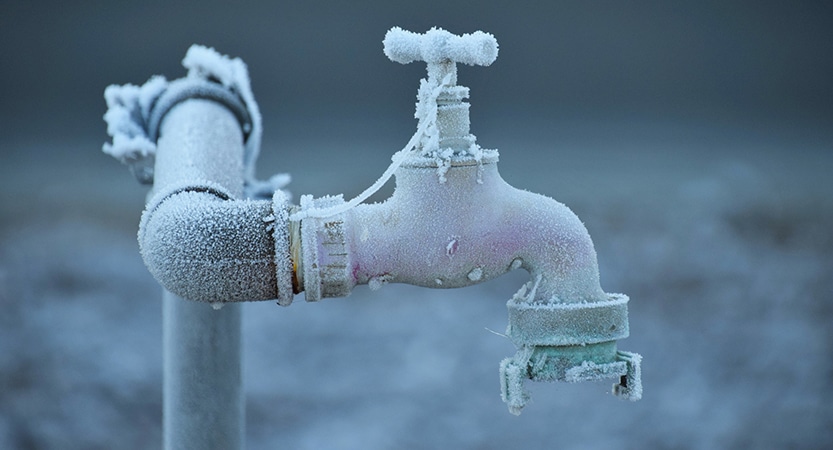Key Strategies for Preventing Frozen Plumbing in Winter
Key Strategies for Preventing Frozen Plumbing in Winter
Blog Article
We've discovered this great article on How To Avoid Freezing Pipes below on the internet and believe it made good sense to relate it with you over here.

Winter can ruin your pipes, especially by freezing pipes. Here's how to prevent it from taking place and what to do if it does.
Intro
As temperatures drop, the danger of frozen pipes rises, potentially resulting in costly fixings and water damages. Understanding just how to avoid frozen pipelines is important for property owners in cool climates.
Understanding Icy Pipes
What triggers pipes to ice up?
Pipelines freeze when revealed to temperatures below 32 ° F (0 ° C) for expanded periods. As water inside the pipes ices up, it expands, taxing the pipeline walls and possibly creating them to burst.
Dangers and problems
Icy pipelines can cause water disturbances, building damages, and pricey repair services. Burst pipes can flooding homes and trigger extensive structural damages.
Signs of Frozen Water Lines
Identifying frozen pipes early can avoid them from breaking.
How to determine icy pipelines
Look for reduced water circulation from taps, uncommon smells or noises from pipelines, and noticeable frost on revealed pipelines.
Avoidance Tips
Shielding vulnerable pipes
Wrap pipes in insulation sleeves or use heat tape to secure them from freezing temperature levels. Concentrate on pipes in unheated or external locations of the home.
Heating strategies
Maintain interior rooms appropriately heated up, especially areas with pipes. Open closet doors to allow cozy air to distribute around pipelines under sinks.
Safeguarding Outdoor Plumbing
Yard hose pipes and exterior taps
Disconnect and drain yard hoses prior to winter. Set up frost-proof faucets or cover outdoor faucets with shielded caps.
What to Do If Your Pipes Freeze
Immediate activities to take
If you suspect frozen pipelines, maintain taps open to ease stress as the ice thaws. Use a hairdryer or towels soaked in hot water to thaw pipelines gradually.
Long-Term Solutions
Architectural modifications
Consider rerouting pipes away from outside walls or unheated locations. Add additional insulation to attic rooms, cellars, and crawl spaces.
Upgrading insulation
Purchase top quality insulation for pipes, attic rooms, and wall surfaces. Correct insulation aids maintain consistent temperatures and minimizes the risk of frozen pipes.
Conclusion
Stopping frozen pipes requires proactive measures and quick responses. By recognizing the reasons, signs, and safety nets, home owners can secure their plumbing during winter.
6 Proven Ways to Prevent Frozen Pipes and Protect Your Home
Disconnect and Drain Garden Hoses
Before winter arrives, start by disconnecting your garden hoses and draining any remaining water. Close the shut-off valves that supply outdoor hose bibs and leave the outdoor faucet open to allow any residual water to drain. For extra protection, consider using faucet covers throughout the colder months. It’s also important to drain water from any sprinkler supply lines following the manufacturer’s directions.
Insulate Exposed Pipes
Insulating your pipes is an effective way to prevent freezing. Pipe insulation is readily available at home improvement stores and is relatively inexpensive. Pay close attention to pipes in unheated areas such as the attic, basement, crawl spaces, or garage. Apply foam insulation generously to create a buffer against the cold. You can also wrap your pipes in heat tape or thermostat-controlled heat cables for added warmth.
Seal Air Leaks
Inspect your home for any cracks or openings that could let in cold air. Seal any holes around the piping in interior or exterior walls, as well as the sill plates where your home rests on its foundation. Additionally, make sure to keep your garage door closed unless you’re entering or exiting. Leaving it open creates a significant air leak that can lead to frozen pipes.
Allow Warm Air Circulation
During cold snaps, it’s essential to allow warm air to circulate evenly throughout your home. Leave interior doors ajar to promote better airflow. Open kitchen and bathroom cabinets to help distribute heat consistently around the rooms. If you have small children or pets, be sure to remove any household chemicals or potentially harmful cleaners from open cabinets for safety.
Let Faucets Drip
A small trickle of water can make a big difference in preventing ice formation inside your pipes. When temperatures drop significantly, start a drip of water from all faucets served by exposed pipes. This continuous flow helps prevent the water from freezing. Additionally, running a few faucets slightly can relieve pressure inside the pipes, reducing the chances of a rupture if the water inside does freeze.
https://choateshvac.com/6-proven-ways-to-prevent-frozen-pipes-and-protect-your-home/

I hope you enjoyed our excerpt on How to prepare your home plumbing for winter weather. Thank you for taking time to read through our post. Feel free to pause to share this blog post if you enjoyed reading it. We thank you for your readership.
Call Today Report this page